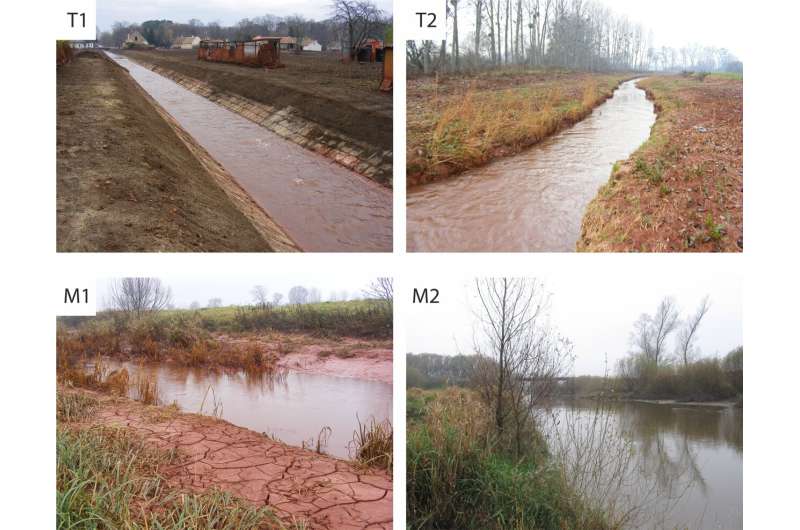This article has been reviewed according to Science X's editorial process and policies. Editors have highlighted the following attributes while ensuring the content's credibility:
fact-checked
proofread
Severity of disturbance plays pivotal role in determining long-term recovery dynamics after industrial disaster: Study

Understanding the impact of ecological disturbances on ecosystems and monitoring their recovery process is vital for ecologists. Disturbances of high intensity and severity, known as "large and infrequent disturbances" (LIDs), pose significant challenges as they are often unplanned and complex events. Long-term surveys play a crucial role in comprehending the recovery process by smoothing out variations in communities and explaining subtle changes in community assembly.
Due to the scarce occurrence and the lack of a terminology and definitions system, the investigation of the real effect of LID on the aquatic ecosystem in a decadal perspective was limited. Researchers built a theoretical framework with a series of consecutive phases to evaluate the recovery dynamics in community assembly after LID. A comprehensive theoretical framework was established, comprising Ramp-up, Overshoot, and Oscillation phases.
However, investigating the true effect of LIDs on aquatic ecosystems over decades is hindered by their scarce occurrence and the absence of a standardized terminology. To address this, a theoretical framework was developed comprising a series of consecutive phases like Ramp-up, Overshoot, and Oscillation, to evaluate community recovery dynamics post-LID.
In 2010, Hungary faced a massive LID when a dam containing red sludge collapsed, causing the largest environmental disaster in Central Europe. A decade-long study examined the recovery of macroinvertebrate communities following this event, comparing recovery patterns after coarse and fine-grain disturbances. Coarse-grain disturbances can cause the extinction of all organisms, while after a fine-grain disturbance, the community was able to partially survive.
The study, published in Science of The Total Environment, demonstrates the effective utilization of research synergies through collaborative efforts among researchers from various institutions, including the University of Pannonia, University of Pécs, HUN-REN Balaton Limnological Research Institute, HUN-REN-PE Limnoecology Research Group, and HUN-REN Center for Ecological Research.
"Our data shows that within a decade, the community recovered successfully both taxonomically and functionally after both coarse- and fine-grain disturbances. We found that the severity of the disturbance plays a pivotal role in determining the long-term recovery dynamics. This implies that the dynamics of recovery vary when the LID totally or partially diminishes the fauna. Specifically, recovery appears gradual after coarse-grain disturbances, while it tends toward an asymptotic pattern following fine-grain disturbances," said Pál Boda.
The study demonstrated that the initial recovery phase was steep and persisted for 4–9 months, irrespective of the severity of disturbances. The coarse-grain disturbances caused a temporary swing of all community metrics compared to the final equilibrium values, a phenomenon the researcher refers to as "Overshoot." In contrast, such a remarkable overshoot could not be observed in communities affected by fine-grain disturbances.
"The more severe the disturbance, the later the macroinvertebrate community reaches an equilibrium state."
The study emphasizes the need for recovery surveys to span 2.5–3 years to capture the entire recovery process, irrespective of disturbance severity, say the researchers. These findings contribute to the understanding of ecosystem resilience and aid in the development of effective conservation strategies.
More information: Kata Karádi-Kovács et al, Long-term recovery dynamics determined by the degree of the disturbance—Ten years tracking of aquatic macroinvertebrate recolonisation after an industrial disaster (Red Sludge Disaster, Hungary), Science of The Total Environment (2024). DOI: 10.1016/j.scitotenv.2024.171071
Provided by Ökológiai Kutatóközpont


















